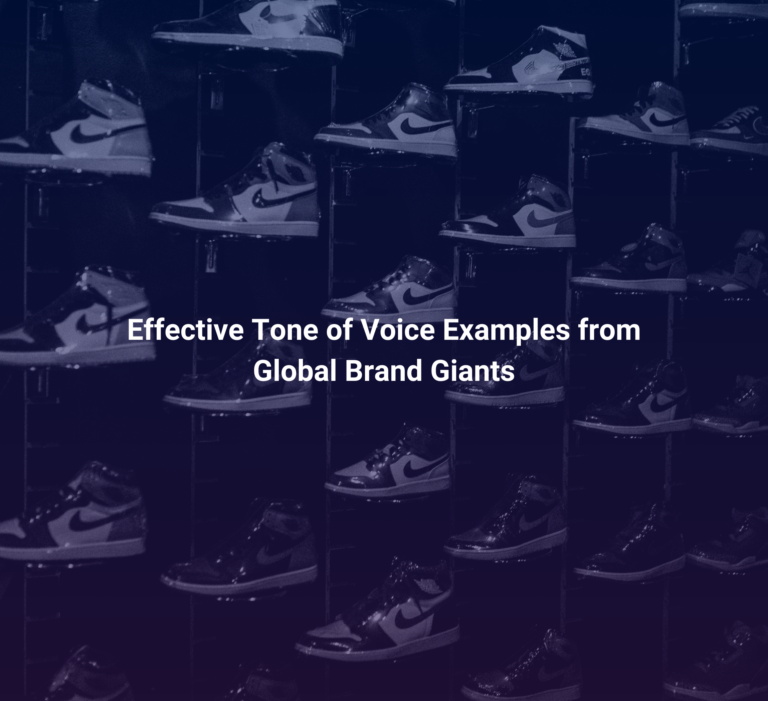What are brand guidelines, and why are they important for your brand?

Brand guidelines are a set of rules that define your brand identity. The guidelines outline everything about your brand from brand colors, typography, tone of voice, taglines, and mission statement, typically in a comprehensive document.
The guidelines help everyone involved with your brand to keep messaging consistent, align with the brand’s values, and maintain a consistent identity across all platforms.
Why should you have brand guidelines?

Keeping a consistent brand across all platforms can have its advantages and benefits. According to a study from Statista made in 2021, keeping a consistent brand can increase company revenue by 10 to 20%.
It also contributes to effective brand communication across multiple channels, by providing clear and concise instructions.
In today’s digital landscape, having holistic brand communication to tackle all the different platforms has become essential to stay competitive and relevant. If you want to secure the future of your brand, having a digital brand guide to ensure a consistent brand image can help you stay competitive and up-to-date.
Here are some benefits of utilizing brand guidelines:
- Time and Cost
- Trust and Loyalty
- Brand Recognition
Time and Cost

Cohesive brand guidelines leave nothing up for interpretation and ensure that every team member and collaborator is on the same page. A digital brand guide can save valuable time and resources by minimizing the need for constant back-and-forth communication and revisions, allowing your team to spend time more efficiently.
Trust and Loyalty

Developing an identity beyond your products and services can build trust and loyalty from consumers who share your brand’s core values and identify with you. When consumers see a unified and recognizable brand across different touchpoints, they are more likely to perceive you as reliable and professional.
Furthermore, a digital brand guide serves as a safeguard preventing potential misuse or misrepresentation of your brand, which not only enhances brand protection but also reinforces your trustworthiness as a brand.
Brand Recognition

Presenting your brand colors consistently across all channels and platforms can increase brand recognition among your audience. Furthermore, clear brand guidelines serve as a safeguard preventing potential misuse or misrepresentation of your brand, which not only enhances brand protection but also reinforces you as a reliable and professional brand.
How to Set Up Brand Guidelines

What should your brand guide include? Of course, this depends on your brand identity, but here are a few of the most common details to include in your brand identity:
Name

Definition: Clearly state the full brand name, any abbreviations, and acceptable variations.
Usage: Specify how the name should be used across different mediums (e.g., email signatures, social media, official documents).
Do’s and Don’ts: Highlight the correct and incorrect ways to use the brand name, including capitalization, spacing, and context.
Logo

Primary Logo: Display the main logo with guidelines on dimensions, spacing, and clear space requirements.
Alternative Logos: Include variations like monochrome, horizontal, or stacked versions, and when each should be used.
Incorrect Usage: Show examples of what NOT to do with the logo, such as distortion, color changes, or placement on inappropriate backgrounds.
File Formats: Provide downloadable links or instructions on where to find different file formats (e.g., .png, .svg, .eps) for various uses.
Colors

Primary Colors: List the brand’s main colors, including HEX, RGB, and CMYK codes.
Secondary Colors: Outline any additional colors that complement the primary palette, with the same coding details.
Color Usage: Explain where and how to use the primary and secondary colors across different platforms (web, print, etc.).
Contrast and Accessibility: Provide guidance on maintaining adequate contrast for accessibility, ensuring the brand is inclusive.
Typography

Primary Typeface: Specify the main font family used for headings, body text, and any other primary elements. Include font weights and styles.
Secondary Typeface: Include a secondary or complementary font for specific uses (e.g., captions, subheadings).
Usage Guidelines: Provide rules for font sizes, line spacing, and hierarchy across different mediums.
Fallback Fonts: Suggest alternative fonts in case the primary typefaces are unavailable, particularly for web use.
Tone of Voice

Voice Description: Define the brand’s overall tone (e.g., professional, friendly, authoritative).
Language Style: Offer examples of preferred language, including vocabulary, phrases, and sentence structure.
Do’s and Don’ts: Highlight acceptable and unacceptable ways to express the brand’s voice in different contexts (e.g., social media vs. formal communication).
Consistency Tips: Provide advice on maintaining a consistent tone across all channels and mediums.
Mission Statement

Statement: Clearly present the brand’s mission statement.
Explanation: Briefly explain the significance of the mission and how it guides the brand’s activities and communication.
Usage: Describe where the mission statement should appear (e.g., websites, marketing materials, internal documents).
Tagline

Tagline Display: Showcase the brand’s tagline with guidelines on when and where it should be used.
Usage Guidelines: Explain the context in which the tagline is appropriate and any variations that may be used.
Visual Integration: Provide examples of how the tagline should appear with the logo and other brand elements.
Brand Story

Narrative: Craft a compelling brand story that includes the history, values, and inspiration behind the brand.
Key Messages: Identify the core messages that should be emphasized in the brand story.
Usage: Suggest how and where the brand story should be told (e.g., websites, presentations, pitches).
Gallery

Visual Assets: Include a selection of approved images, videos, and other visual content that represents the brand.
Guidelines for Use: Provide instructions on how to use these assets, including any restrictions on editing or modifying them.
Access Information: Provide details on where team members or partners can download or access these assets for their needs.
Graphics

Iconography: Present the icons and other graphic elements that are part of the brand’s visual identity.
Usage Guidelines: Offer guidance on how these graphics should be used in different contexts (e.g., website, social media, print).
Incorrect Usage: Show examples of incorrect graphic usage to avoid inconsistencies.
Templates: Provide access to templates that incorporate these graphics for consistent use across various materials.
Positioning and Differentiator

Brand Positioning: Clearly articulate where the brand fits within the market and how it is perceived in relation to competitors.
Differentiators: Identify the unique selling points (USPs) that set the brand apart from others.
Communication Strategy: Offer guidance on how to communicate the brand’s positioning and differentiators in marketing materials, pitches, and public relations.
Target Audience: Define the brand’s target audience and how the positioning resonates with them.
Check out our post about Do’s and Don’ts in brand guidelines, for more tips and information.
How to Get More out of Your Brand Guidelines by Using a Digital Brand Solution

How to set up a digital brand guide in brandguide.io.

brandguide.io functions as a home for your brand. Upload and store assets, leave clear instructions and guidelines, and share them seamlessly by a link. Gone are the days where you have to rummage through countless drives, PDFs, and folders to find what you’re looking for. brandguide.io functions well as a media library for all your brand assets and their corresponding guidelines in the same location.

You begin by creating your brand guide on your dashboard. After entering your brand name, you can start setting up your desired pages.

Organize your pages to your heart’s desire. Lock pages with information meant for your eyes only behind a password.

Use the Color Palette block to insert your brand colors. This block has many helpful features to ensure you always have easy access to your brand colors. You can easily copy your color to the clipboard simply by clicking on the desired color. With the drop tool, you can copy color values from anywhere on your screen, saving you time from inputting the color value yourself.

Do you wish to showcase your typefaces quickly? Upload your font files into the Typography Block and it will immediately showcase your fonts.

You can embed videos from both YouTube and Vimeo with our Embedded Video Block, by pasting a link.

Upload your brand assets as downloadable files, and organize them to your liking. With clear instructions and different file formats, you can be sure that people will find exactly what they want. By providing clear instructions and titles, you can get the most out of the search bar to find files and guidelines quickly.

Need to separate brand guides between different departments? Use the copy tool to copy your brand to a new guide, allowing you to quickly set up an identical guide for another department which you can navigate to from your dashboard.
Do you need additional customizations, such as integrations or more storage, to your brand guide? With our enterprise plan, we will tailor brandguide.io to your needs and wants. Contact us at sales@brandguide.io to begin your new branding journey.
Summary
In summary, brand guidelines are crucial for maintaining a consistent and recognizable brand identity across all platforms. They help streamline communication, build trust and loyalty, and ensure your brand is perceived as professional and reliable.
By clearly defining elements like logos, colors, typography, and tone of voice, brand guidelines not only save time and resources but also protect your brand’s integrity. Implementing a digital brand guide can further enhance efficiency, making it easier to manage and share your brand assets in a unified, accessible way.
Resources
- Contribution of brand consistency to company revenue in the U.S. 2021
- Three Myths about What Customers Want by Karen Freeman, Patrick Spenner, and Anna Bird
- Trademark Protection of Color Alone: How and When Does a Color Develop Secondary Meaning and Why Color Marks Can Never Be Inherently Distinctive by Diane E. Moir






